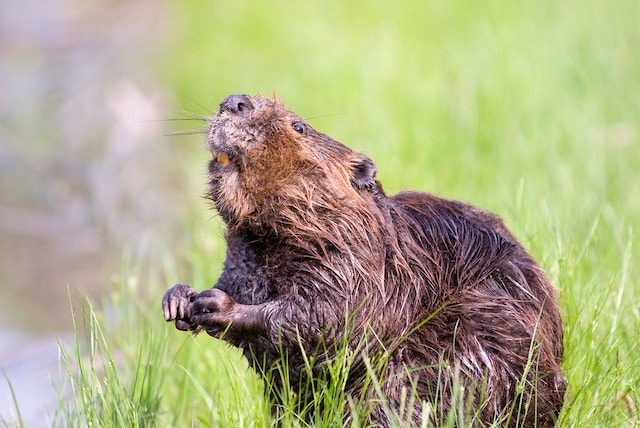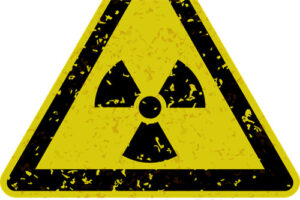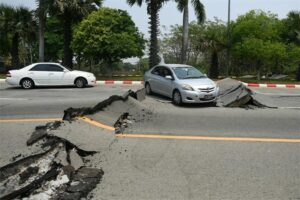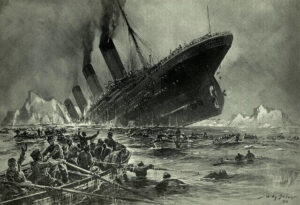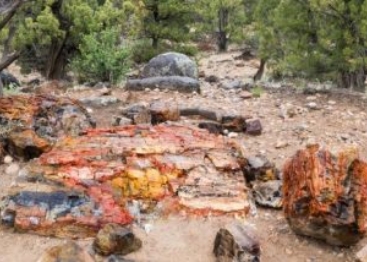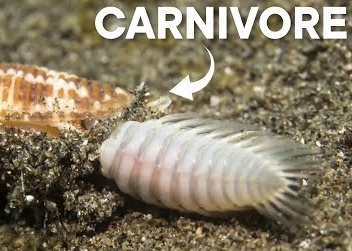10 Mind-Blowing Ways Nuclear Technology Has Been Used in History
Nuclear power is, without a doubt, one of the safest and most efficient energy sources we have today. It’s reliable, produces massive amounts of energy with minimal waste, and has a far smaller environmental footprint compared to fossil fuels. But here’s the catch: no matter how impressive the technology is, nuclear power can’t seem to shake its bad reputation. And honestly, it’s not hard to see why.
When nuclear power goes wrong, it goes really wrong. Think Chernobyl, Fukushima, or Three Mile Island—disasters that left deep scars on public consciousness. Add to that its unavoidable association with nuclear weapons, and you’ve got a recipe for fear and skepticism. For many people, the word “nuclear” doesn’t conjure images of clean energy or cutting-edge technology. Instead, it brings to mind mushroom clouds, fallout shelters, and apocalyptic scenarios.
The irony is that nuclear power is often misunderstood. The science behind it is nothing short of remarkable, but for the average person, it’s complex and intimidating. Radiation, reactors, and chain reactions sound more like something out of a sci-fi movie than a solution to our energy needs. Over the years, scientists and innovators have tried to rebrand nuclear power, even exploring new and creative uses for radiation—from medical treatments to food preservation. Some of these efforts have been successful; others, not so much.
But no matter how many advancements are made, the stigma lingers. It’s a classic case of perception versus reality. Nuclear power has the potential to revolutionize how we power our world, but convincing people to embrace it is a battle against deeply ingrained fears. And let’s be honest: when it comes to nuclear, those fears aren’t entirely unfounded. The key lies in education, transparency, and perhaps a little bit of rebranding. After all, if we can get past the fear, we might just unlock one of the most powerful tools humanity has ever known.
10.Colorado’s Nuclear Fracking Experiment: What Went Wrong?
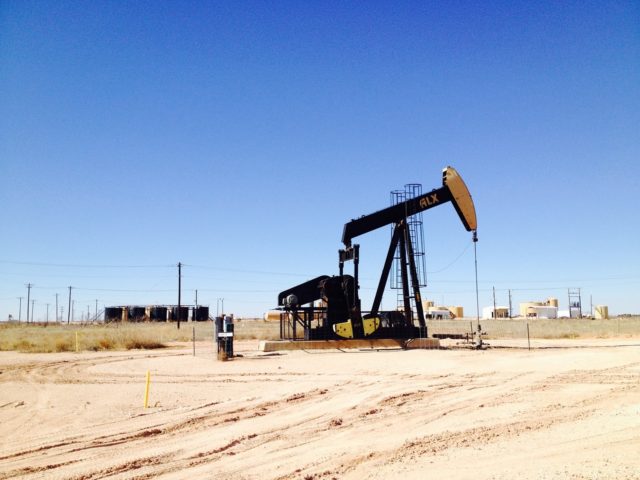
Fracking—short for hydraulic fracturing—is a controversial method of extracting natural gas and oil from deep underground. The process involves drilling a hole, pumping a mix of water, sand, and chemicals into it, and using the pressure to crack open rock formations, releasing the trapped resources. While it might sound like a clever idea, fracking has been linked to a host of environmental issues, from groundwater contamination to triggering earthquakes. But if regular fracking is bad, what about nuclear fracking? Yes, you read that right. Someone actually thought dropping a nuclear bomb underground to extract gas was a good idea. And Colorado decided to give it a shot.
Back in 1969, Colorado conducted an experiment called Project Rulison. The plan? Drill a hole over 8,000 feet deep into the Piceance Basin, drop a 40-kiloton nuclear bomb into it, and let the explosion fracture the rock to release natural gas. For context, the bomb dropped on Hiroshima was 15 kilotons, and Nagasaki’s was 25. Colorado’s test was essentially combining the two and burying it near a small town called Rulison.
Believe it or not, the townspeople turned it into a spectacle. They were invited to watch the detonation, and some even brought picnic blankets to make a day of it. When the bomb went off, the surface damage was minimal—just a mid-level earthquake for those nearby. No immediate devastation, no mushroom cloud, just a bizarre underground boom.
But here’s the kicker: the experiment didn’t exactly work as planned. While the bomb did release natural gas, it also contaminated the gas with radiation. Oil companies detected radioactive traces in the gas samples, making it unusable. Eventually, they packed up and left, leaving behind a radioactive mess. The oil extracted from the site was too contaminated to be of any use, rendering the entire experiment pointless.
The story of nuclear fracking is equal parts fascinating and horrifying. It’s a reminder of humanity’s willingness to push boundaries, even when the risks are sky-high. While the test didn’t cause immediate catastrophe, it left behind a legacy of radioactive gas and a cautionary tale about the dangers of playing with nuclear fire. Sometimes, just because you can do something doesn’t mean you should.
9.Ruby Red Grapefruit Was Bred Thanks to Radiation Mutations

Some people really like to start their day dousing a half of bitter, terrible grapefruit with sugar so it’s palatable enough to eat. But at some point, grapefruit growers realized they needed to make a tastier and more attractive version of their fruit if they wanted to keep making a living and the Ruby Red grapefruit was born. Except it wasn’t as simple as all that and radiation was involved.
Back in the 1920s, grapefruit was not even considered a real crop. It was described as worthless at one point because the pale, bitter fruit was basically inedible. But there were a few mutant strains of grapefruit that didn’t have pale or pure white flesh and those were much more appealing.
Focusing on the pink grapefruit, farmers bred them and created a new strain of all pink grapefruit and people liked them. Except that, over time, the color faded and soon they were ugly, pale fruits again.
Using thermal neutrons, scientists irradiated those trees and forced them to mutate further. This ended up causing them to rocket right past pale pink and gave rise to red grapefruit. The first strain, Star Ruby, came out in 1971. Later, in 1985, Rio Red was introduced. People have been loving red grapefruit ever since and over 75% of all the crops in Texas are these irradiated mutant strains.
Many other crops get the same treatment as grapefruit. Barley, rice peas, bananas, pears, and many other plants have all been cultivated thanks to radiation mutation.
8.Radiation is Used as a Preservative for Food

When most people hear the word “radiation,” they think of superhero origin stories or nuclear disasters. But radiation isn’t just about creating mutants or powering cities—it’s also a game-changer for food safety and preservation. In fact, it’s quietly working behind the scenes to keep your produce fresh and your meals safe.
The secret lies in ionizing radiation, a process that zaps food with just enough energy to kill off harmful microorganisms without making the food itself radioactive. Think of it as a high-tech bug zapper for bacteria. By targeting the microbes that cause spoilage, radiation extends the shelf life of fruits, vegetables, and other perishables. That means fewer trips to the grocery store and less food waste in your fridge.
But it’s not just about keeping your strawberries fresh. Radiation also plays a crucial role in food safety. It can eliminate dangerous pathogens like E. coli and salmonella, which are responsible for severe—and sometimes deadly—cases of food poisoning. It even takes care of pesky insects and larvae, making sure your food is as clean as it is fresh. Some foods treated with radiation can stay shelf-stable for years, making it a lifesaver for long-term storage.
If you’ve ever spotted the Radura logo on a food package, you’ve encountered this process in action. Radurization, as it’s called, is a stamp of approval indicating that the food has been treated with ionizing radiation. And before you worry, know this: the process has been thoroughly tested and approved by major organizations like the FDA, USDA, CDC, and WHO. It’s completely safe for consumption and widely used around the world.
7.Boy Scouts Have a Nuclear Science Merit Badge
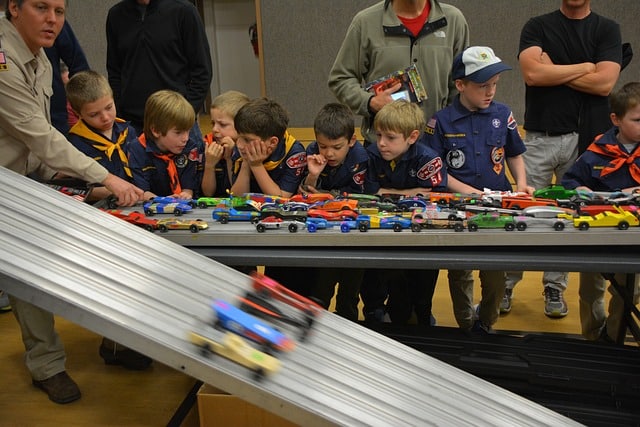
When you imagine who might be trusted to handle nuclear materials, who comes to mind? Scientists in lab coats? Military personnel? How about… Boy Scouts? Believe it or not, there’s actually a nuclear science merit badge that Scouts can earn. And no, it doesn’t involve handling dangerous amounts of radiation—thankfully. In fact, the requirements are far tamer than you might think.
To earn the badge, Scouts start by learning the basics of radiation: what it is, the different types, and how it works in the world around us. It’s a crash course in nuclear science, minus the complicated equations. But the fun part comes in the activities. A few years ago, Scouts could grow their own “nuclear garden” using irradiated seeds or even prepare meals with irradiated foods to compare them to non-irradiated ones. Imagine a Scout meeting where kids are debating the merits of irradiated strawberries—science meets snack time!
However, the rules have since changed. While the badge still exists, the hands-on radiation experiments have been phased out. No more growing glowing plants or munching on irradiated snacks, even though the activities were perfectly safe. Instead, Scouts can now earn the badge by touring nuclear reactors, visiting X-ray labs, or exploring other radiation-related facilities. It’s less about handling materials and more about seeing the real-world applications of nuclear science.
It’s a fascinating glimpse into how even young kids can engage with complex topics like nuclear energy in a safe and educational way. The badge not only sparks curiosity but also demystifies a subject that often feels intimidating. And let’s be honest—earning a nuclear science merit badge is a pretty cool bragging right for any Scout. Who knows? It might even inspire the next generation of scientists, engineers, or even nuclear gardeners.
6.Blue Topaz is Made by Irradiating Normal Topaz

If you’re a gem person, then you know that blue topaz is the birthstone for December. Most topaz is pale yellow or even brown but impurities can lead to various colors from yellow to orange and even blue. Blue is one of the more desirable colors because it’s visually striking and also relatively cheap. Unlike rare stones that you need some luck to find, you can just make blue topaz in a lab by irradiating normal topaz.
Natural blue topaz is hard to find and much more expensive, but irradiated ones are often more uniform in color and less expensive. Bombarding the crystals strips away electrons and alters the lattice of the crystal, changing how light passes through and the color we perceive. After radiation, it’s heated and can turn anywhere from a pale blue to a rich, deep blue.
Blue topaz could potentially be dangerous so the crystals have to be set aside after they’re irradiated so the radioactivity can decay and render them mostly inert once more.
5.Chernobyl Soybeans Could Protect Human Blood from Radiation
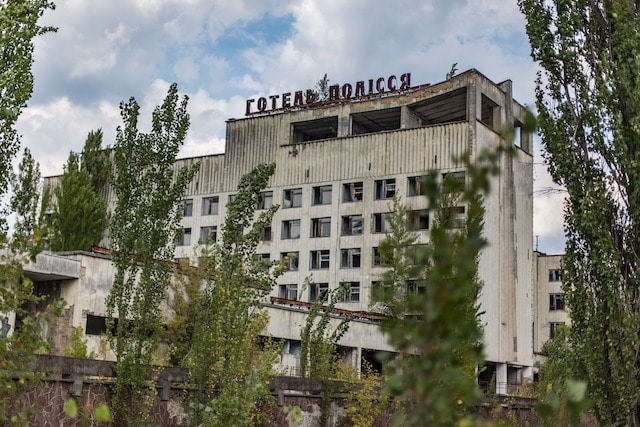
When you think of the Chernobyl disaster of 1986, “silver linings” probably isn’t the first thing that comes to mind. The catastrophic nuclear accident left a legacy of devastation, but it also gave us a few unexpected gifts: a gripping HBO miniseries, a wildlife sanctuary where animals thrive without human interference, and—wait for it—soybeans. Yes, soybeans.
In the years since the disaster, scientists have turned the irradiated zone into a living laboratory, studying how radiation affects nature. One of their experiments involved growing crops in the contaminated soil near Chernobyl. Among these crops were soybeans, which not only grew but also developed some fascinating adaptations.
Unlike regular soybeans, the Chernobyl-grown beans produced proteins that were strikingly different. One of these proteins, in particular, has the remarkable ability to protect human blood from radiation damage. It’s as if the plants evolved their own survival toolkit to thrive in an otherwise hostile environment. And they did it in ways that could benefit us, too.
Here’s how it works: the Chernobyl soybeans are smaller and absorb water more slowly than their non-irradiated counterparts. But they produce three times the amount of cysteine synthase, a protein that binds heavy metals, and 32% more betaine aldehyde dehydrogenase, which can reduce chromosomal abnormalities in humans. In other words, these beans aren’t just surviving—they’re thriving, and they’re packing some serious scientific punch.
The implications of this research are huge. If we can grow crops that adapt to extreme conditions like those in Chernobyl, we might be able to grow them in other challenging environments—like space. Imagine astronauts munching on radiation-resistant soybeans while orbiting Mars. It’s not as far-fetched as it sounds.
Chernobyl may always be synonymous with tragedy, but it’s also a reminder of nature’s resilience and humanity’s ability to find hope in the unlikeliest of places. Who knew that a humble soybean could teach us so much about survival, adaptation, and the future of food?
4.Russia Used a Nuclear Bomb to Make a Lake
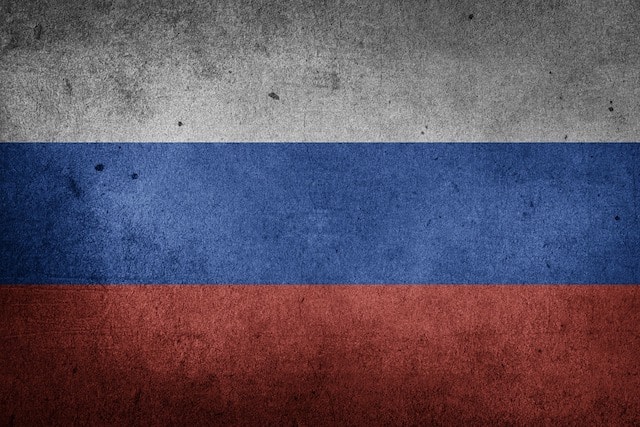
Everyone loves having property on the water, right? A nice lake-front cabin would be lovely. But how do you get one if it’s all scooped up already? Maybe just make a new lake. Russia tried it once and all it took was a nuclear bomb.
In 1965, the Soviet Union ran a nuclear test called Chagan in Kazakhstan. It was the largest of 124 such tests and exploded a 140-kiloton bomb, nearly ten times more powerful than the one dropped on Hiroshima. The plan was to explode the device in a dry riverbed and create a new lake. And it worked.
The newly formed lake, drawing water from a nearby river after the explosion, was 1,339 feet wide and 330 feet deep. To this day the lake is called Atomic Lake because, although it worked, it’s still 100 times more radioactive than is considered safe nearly 60 years later.
3.Russia Used a Nuke to Stop a Gas Well Fire
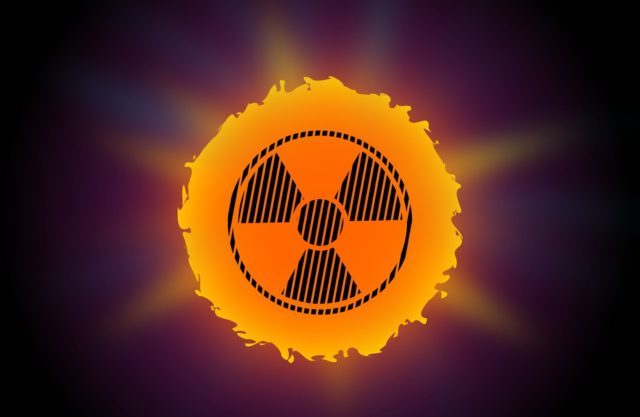
When it comes to nuclear weapons, Russia has never been shy about thinking outside the box. From creating artificial lakes to solving engineering nightmares, they’ve found some truly unconventional uses for their atomic arsenal. One of the most jaw-dropping examples? Using a nuclear bomb to put out a gas fire. Yes, you read that right.
The story takes us to Urtabulak, Uzbekistan, in 1966. A natural gas well had been burning out of control for three years, spewing an astonishing 12 million cubic meters of gas into the air every single day. Despite countless efforts to extinguish the flames, nothing worked. The fire was a massive environmental and economic disaster, and it seemed unstoppable—until someone had a wild idea: fight fire with fire. Or, more accurately, fight fire with a nuclear explosion.
Here’s how it went down: Engineers drilled a hole next to the blazing well and carefully placed a 30-kiloton nuclear bomb inside. For context, that’s about twice the size of the bomb dropped on Hiroshima. The idea was to use the bomb’s immense energy to seal the well and snuff out the fire. Crazy? Absolutely. But it worked.
When the bomb detonated, the explosion crushed the well’s structure, effectively sealing it shut. The fire was extinguished instantly, and—remarkably—no radiation leaked into the surrounding area. It was a high-stakes gamble that paid off in the most spectacular way.
This bizarre yet brilliant solution is a testament to human ingenuity, even in the face of seemingly insurmountable challenges. It’s also a reminder of the sheer power of nuclear energy—and how, when used creatively, it can solve problems that would otherwise be impossible to tackle. Sure, it’s not your everyday firefighting technique, but for Urtabulak, it was nothing short of a miracle.
2.Radioactive Baths are Used to Treat Chronic Pain
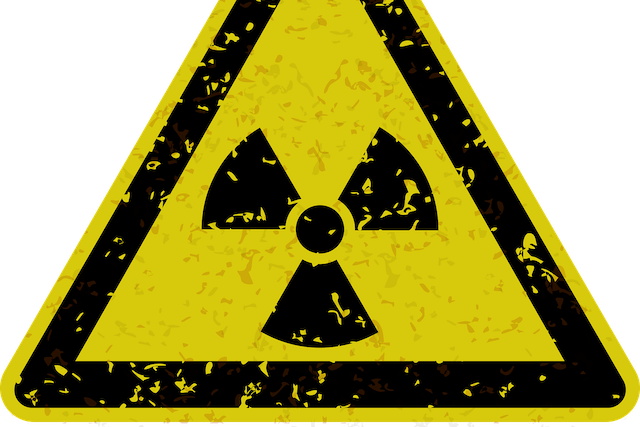
Chronic pain conditions can be brutal for those who endure them. Modern medicine has very few options for people with serious nerve damage and most drugs dull the pain but never truly eliminate it. For some, radioactive baths are a solution.
People with arthritis and other degenerative conditions have reported that spa treatments using radioactive gas radon can help ease the pain. It’s low dose and the treatment time is short but some evidence suggests it has a therapeutic effect.
In Japan, a bathhouse offers patrons the chance to soak in water that has been exposed to radium. It’s also very low dose and sourced from a mine. The water is extremely low in radiation levels but, again, people claim it makes them feel better.
1.Weaponized Wildlife? How the US Tried Using Radioactive Foxes in WWII
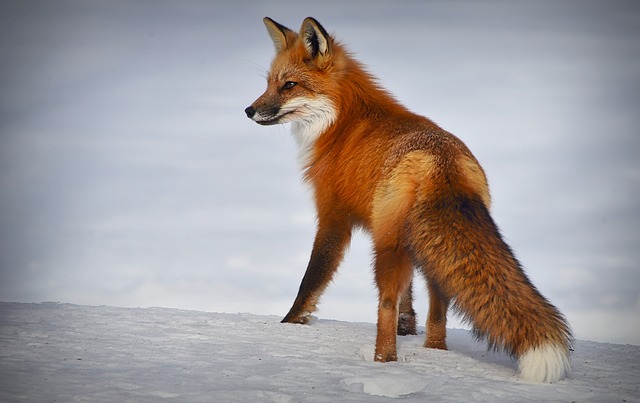
Governments have a knack for coming up with bizarre, often secretive plans, especially during wartime. Some ideas are so outlandish they sound like they’re straight out of a sci-fi movie. Take, for instance, the WWII-era plan to weaponize radioactive foxes. Yes, you read that right—radioactive foxes.
The scheme, dubbed Operation Fantasia, was dreamed up by the U.S. Office of Strategic Services (OSS), the precursor to the CIA. The goal? To exploit Japanese folklore and superstitions surrounding kitsune, or fox spirits. In Japanese culture, foxes are often seen as mystical, shape-shifting beings with supernatural powers. The OSS figured that if they could make foxes appear otherworldly, they might terrify Japanese troops and civilians alike.
Enter Ed Salinger, the OSS agent behind the plan. His idea was as wild as it sounds: capture live foxes, spray them with glow-in-the-dark, radioactive paint, and release them in Japan. The glowing foxes, he believed, would cause mass panic and confusion. As if that wasn’t enough, Salinger also suggested spraying fox scent around to amplify the fear—because, apparently, he thought the Japanese would instantly recognize and dread the smell of foxes.
To test the idea, the OSS painted 30 foxes and set them loose in a Washington, D.C., park. The results were… memorable. Parkgoers, unaware of the experiment, were understandably freaked out by the sight of glowing foxes wandering around. One report to the National Park Police described a visitor fleeing in terror, suffering from a case of the “screaming jeemies.” The test was deemed a success in terms of causing panic, but there was one major problem: no one had a clue how to transport radioactive foxes to Japan without the paint rubbing off or how to keep them in populated areas.
In the end, Operation Fantasia was abandoned. It remains one of the strangest and most creative—if utterly impractical—wartime schemes ever conceived. It’s a reminder that even in the darkest times, human ingenuity (and a touch of absurdity) knows no bounds.


